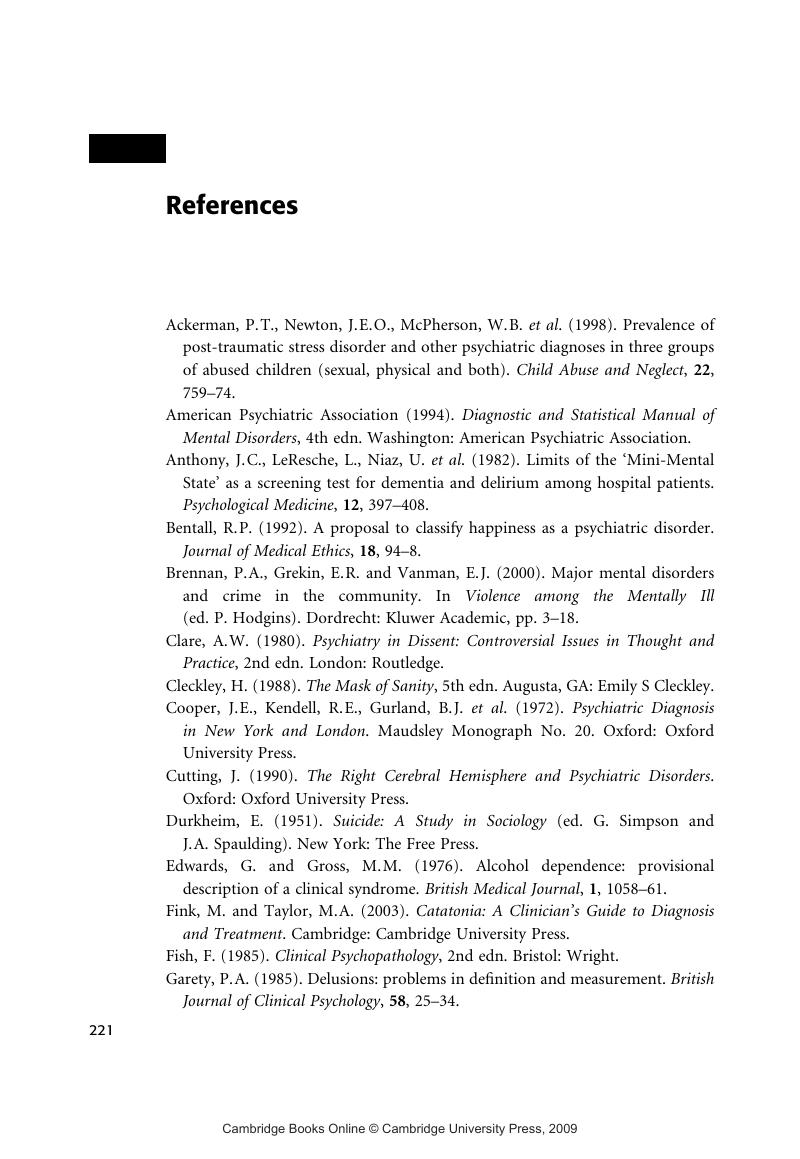Book contents
- Frontmatter
- Contents
- Acknowledgements
- Introduction
- Part I What am I trying to find out here?
- Part II The main principles of one-to-one interviewing
- Part III The difficult interview
- Part IV Self-awareness
- Part V Out of the clinic
- Part VI Drawing it all together
- Afterword: getting alongside patients
- References
- Index
- References
References
Published online by Cambridge University Press: 06 September 2009
- Frontmatter
- Contents
- Acknowledgements
- Introduction
- Part I What am I trying to find out here?
- Part II The main principles of one-to-one interviewing
- Part III The difficult interview
- Part IV Self-awareness
- Part V Out of the clinic
- Part VI Drawing it all together
- Afterword: getting alongside patients
- References
- Index
- References
Summary

- Type
- Chapter
- Information
- Psychiatric Interviewing and Assessment , pp. 221 - 223Publisher: Cambridge University PressPrint publication year: 2006



